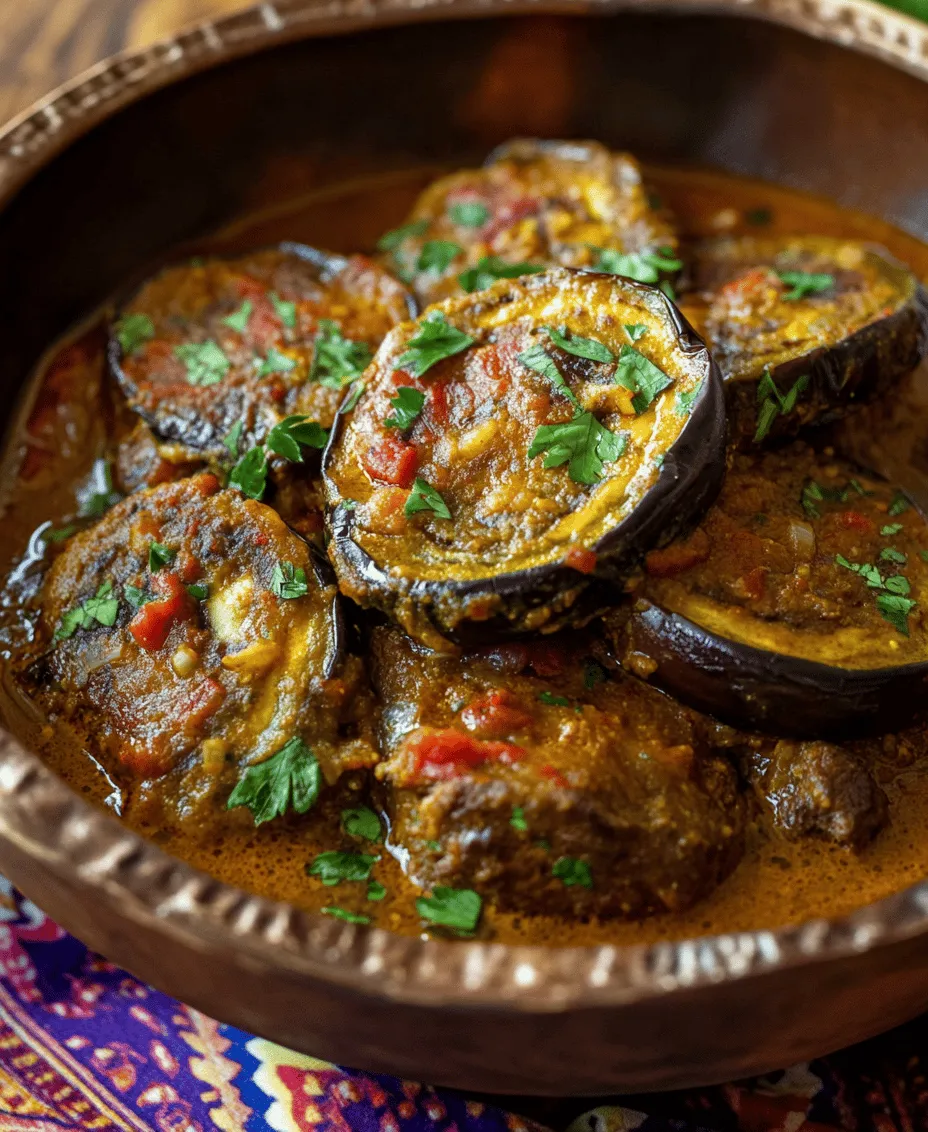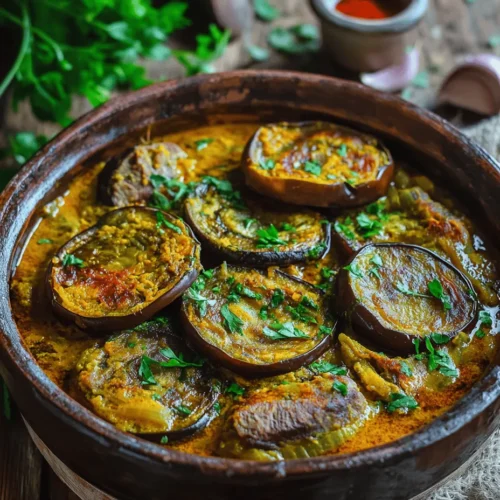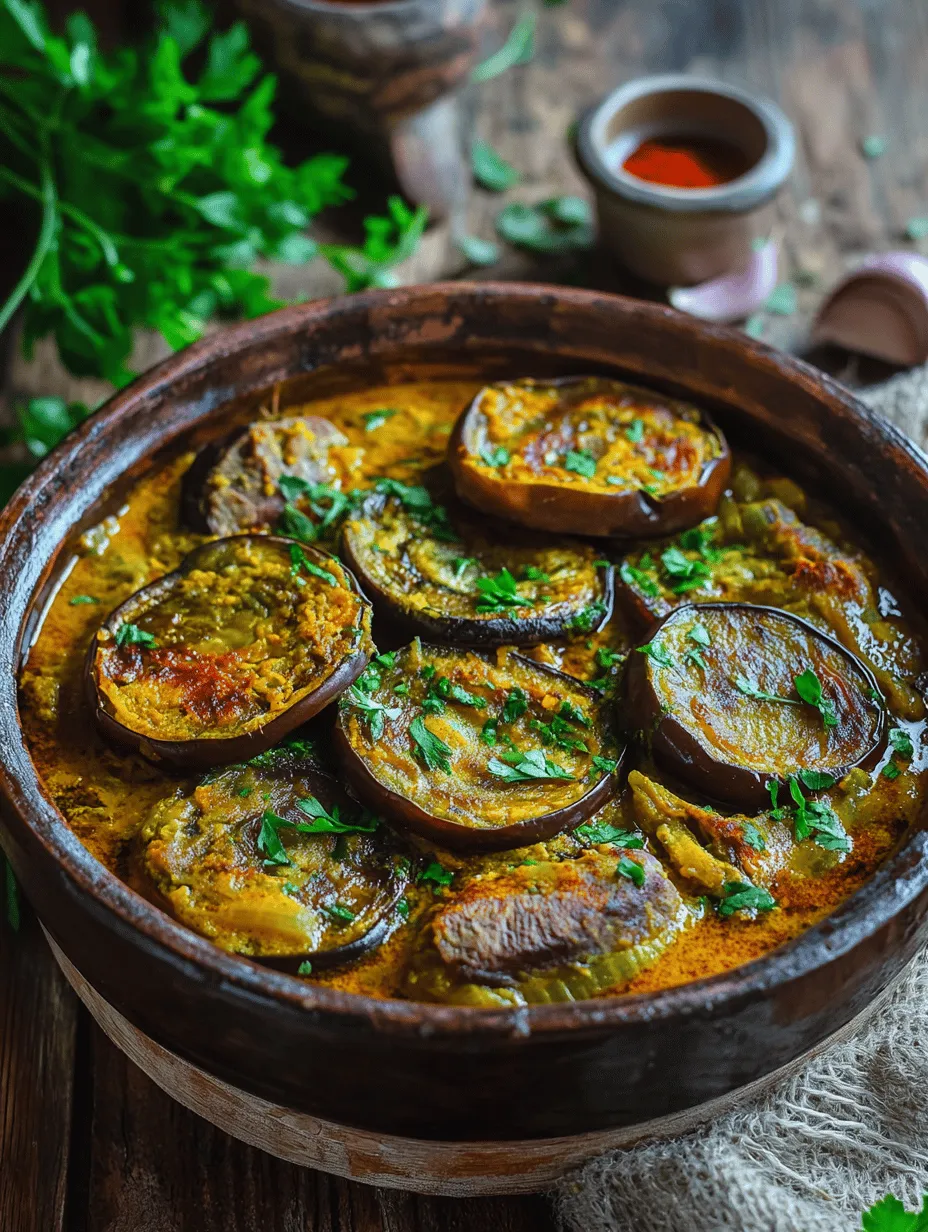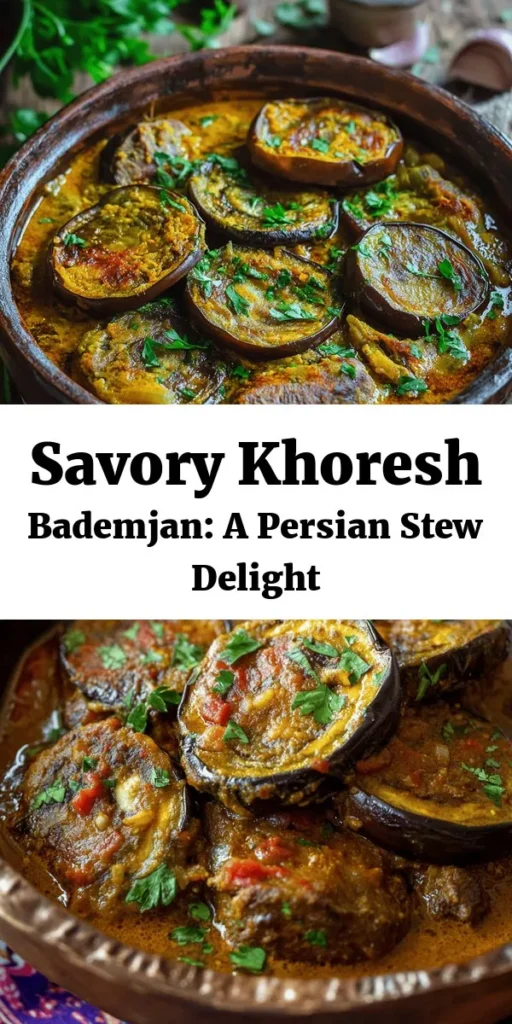Khoresh Bademjan, a cherished gem of Persian cuisine, is a dish that captures the essence of traditional Iranian cooking. This savory stew is characterized by its rich combination of tender meat, succulent eggplants, and a medley of aromatic spices. As a staple in households across Iran, Khoresh Bademjan is often served with fluffy basmati rice, creating a heartwarming meal that speaks to the soul. In this article, we will delve into the origins of this delightful dish, its cultural significance, and provide you with the essential steps to prepare this flavorful stew.
Understanding Khoresh Bademjan: Cultural Significance and Flavor Profile
Exploring the Origins of Khoresh Bademjan
The history of Khoresh Bademjan can be traced back to ancient Persia, where stews have been a fundamental part of the culinary landscape for centuries. In Persian culture, stews, or “khoresh,” are not just meals but an expression of hospitality and communal dining. The use of eggplants in Khoresh Bademjan is particularly noteworthy, as eggplants have been cultivated in Iran for over a thousand years, becoming a beloved ingredient in various dishes.
Eggplants, or “bademjan” in Persian, have a unique ability to absorb flavors, making them an ideal companion for the spices and meats used in this stew. Traditionally, Khoresh Bademjan is made with lamb or beef, which adds depth and richness to the dish. The slow cooking process allows the meat to become tender while infusing the stew with the warm, earthy flavors of spices like turmeric and saffron, both of which are integral to Persian cooking.
Key Ingredients and Their Roles in the Dish
To create an authentic Khoresh Bademjan, it’s essential to understand the contributions of each ingredient. The primary components include:
– Meat: Commonly lamb or beef, which provides the stew with a hearty base and a rich flavor.
– Eggplants: The star of the dish, eggplants lend a creamy texture and absorb the delicious spices, enhancing the overall taste.
– Onions: A staple in many cuisines, onions are used for their sweetness and depth, forming the foundation of the stew’s flavor profile.
– Spices: Turmeric is often used for its warm color and earthy flavor, while saffron adds a luxurious aroma and a hint of sweetness. Other spices may include cinnamon and black pepper, which contribute to the complexity of the dish.
Preparing the Ingredients: Steps to Success
Before diving into the cooking process, proper preparation of the ingredients is crucial for achieving the best results. Here are the steps to follow to ensure a successful Khoresh Bademjan.
Selecting the Right Eggplants
Choosing the right eggplants is vital for the success of Khoresh Bademjan. The best types for this recipe are the globe or Italian eggplants, which are known for their tender flesh and fewer seeds. When selecting eggplants, look for ones that are firm, shiny, and have a vibrant purple color. Avoid eggplants that have blemishes or are excessively soft, as these may indicate overripeness.
The Importance of Salting Eggplants
Salting eggplants is an essential step that many home cooks overlook. This process helps to draw out excess moisture and bitterness from the eggplants, which can enhance the overall flavor of the dish. To salt eggplants, slice them into the desired thickness and sprinkle with salt. Allow them to sit for about 30 minutes; you will notice droplets of moisture forming on the surface. Afterward, rinse the eggplants thoroughly and pat them dry with a paper towel. This not only reduces bitterness but also improves the texture when frying.
Chopping and Preparing the Aromatics
Aromatics play a crucial role in building the flavor of Khoresh Bademjan. Start by finely chopping onions and garlic. The onions should be diced into small pieces to ensure they caramelize properly and meld seamlessly into the stew. Garlic, when minced, adds a pungent kick that enhances the overall taste profile. For best results, sauté the onions until they are golden brown before adding the garlic towards the end of the cooking process to prevent it from burning. This step will create a fragrant base that elevates the entire dish.
Cooking Khoresh Bademjan: A Step-by-Step Guide
With the ingredients prepared, it’s time to move on to the cooking process. The following steps will guide you through creating a delicious Khoresh Bademjan that is sure to impress your family and friends.
Frying the Eggplants to Perfection
Frying the eggplants is a key step in achieving the right texture for Khoresh Bademjan. Start by heating a generous amount of oil in a large skillet over medium heat. Once the oil is hot, carefully add the salted and dried eggplant slices in batches to avoid overcrowding the pan. Fry the eggplants until they are golden brown on both sides, which should take about 3-4 minutes per side.
To achieve the ideal color, ensure the oil is hot enough before adding the eggplants. If the oil is too cool, the eggplants will absorb excess oil and become greasy. Once fried, remove the eggplants from the skillet and place them on a paper towel-lined plate to drain any excess oil. This step is crucial for maintaining the dish’s balance of flavors and avoiding a heavy texture.
As we continue to explore the depths of Khoresh Bademjan, we will cover the subsequent steps of combining the ingredients and the cooking process in the next segment. The journey to creating this savory Persian stew is not only a culinary adventure but also a celebration of rich cultural heritage and time-honored traditions. Stay tuned as we guide you through the final steps of this beloved recipe.

Sautéing the Onions and Garlic
The foundation of a great Khoresh Bademjan begins with properly sautéing onions and garlic. Sautéing the onions until they become translucent is crucial, as this step helps to release their natural sweetness, which will add depth to your stew. This process typically takes about 5-7 minutes over medium heat. Stir frequently to prevent them from browning too quickly, which can lead to a bitter flavor.
When it comes to garlic, timing is everything. Garlic burns easily due to its low cooking threshold, so it should be added to the pan only after the onions have softened. Sauté the garlic for about 30 seconds, just until you can smell its fragrant aroma. Immediately remove the pan from heat if you notice the garlic starting to brown; this will prevent it from becoming bitter and ruining the dish.
Browning the Meat: Achieving Depth of Flavor
Next, it’s time to brown your chosen meat—beef or lamb—before adding it to the stew. Browning the meat is a critical step in developing the dish’s rich flavor profile. Use a heavy-bottomed pot or Dutch oven to ensure even cooking. Heat a tablespoon of oil over medium-high heat and add the meat in batches to avoid overcrowding the pan.
Allow the meat to sear without stirring for a few minutes until it develops a deep brown crust. This caramelization is essential as it enhances the overall taste of the khoresh. Remember to season the meat with salt and pepper before browning to help build layers of flavor. Once browned, remove the meat from the pot and set it aside while you prepare the stew base.
Incorporating Tomatoes and Spices
Once the meat is browned, it’s time to incorporate the tomatoes and spices. Start by adding diced tomatoes (preferably fresh or canned) to the pot, scraping up any browned bits from the bottom to incorporate their flavor into the sauce. The acidity of the tomatoes balances the richness of the meat and eggplants, creating a well-rounded flavor.
When it comes to spices, the classic combination of turmeric, cumin, and cinnamon works beautifully in Khoresh Bademjan. Add these spices while the tomatoes are cooking down, as this will help to bloom their flavors, making them more aromatic. Aim for a balance; you want the spices to complement the dish without overpowering the natural flavors of the meat and vegetables.
Simmering for Richness: Liquid and Cooking Process
For the liquid component of your stew, you can choose between water or beef broth. Beef broth will enhance the umami flavors, while water will yield a lighter stew. Add the liquid gradually, ensuring that it just covers the meat and vegetables to allow for proper simmering.
Bring the stew to a gentle boil, then reduce the heat to low and cover it with a lid. Allow it to simmer for at least 1.5 to 2 hours, stirring occasionally. This slow cooking process allows the flavors to meld together beautifully and ensures that the meat becomes tender. To monitor the stew, check the liquid level periodically; if it appears to be reducing too quickly, add a little more broth or water.
Layering Fried Eggplants for Final Touches
While your stew is simmering, prepare the eggplants. Slice them into rounds and sprinkle with salt to draw out excess moisture. After about 30 minutes, rinse the eggplants and pat them dry. Heat oil in a separate pan and fry the eggplant slices until they are golden brown and tender.
To add the eggplants to the stew, carefully layer them on top of the simmering meat and sauce in the final 30 minutes of cooking. This method allows the eggplants to absorb the rich flavors of the khoresh without disintegrating. For best results, avoid stirring them in; instead, gently nestle them into the stew so they maintain their shape and texture.
Serving Khoresh Bademjan: Presentation and Accompaniments
Perfect Pairings: Side Dishes to Complement the Stew
Khoresh Bademjan is traditionally served with fluffy Persian rice, known as “chelow.” The rice is often steamed to achieve a light, airy texture and may be flavored with saffron to enhance its aroma and color. Serve the khoresh over a bed of rice, allowing the rich sauce to soak in and flavor the grains.
For a refreshing contrast, consider serving a simple salad alongside your khoresh. A Shirazi salad made with diced cucumbers, tomatoes, and onions dressed in lemon juice and olive oil adds a bright note to the dish. Additionally, flatbreads like lavash or sangak are perfect for scooping up the stew.
Garnishing for Visual Appeal
Presentation is key when serving Khoresh Bademjan. Fresh herbs, such as parsley or cilantro, can be sprinkled over the top just before serving to add a splash of color and freshness. You can also serve lemon or lime wedges on the side, allowing diners to squeeze a bit of acidity over their portion for added brightness.
Conclusion: Enjoying Khoresh Bademjan and Its Rich Heritage
Khoresh Bademjan is more than just a meal; it is a culinary experience that reflects the rich traditions of Persian cooking. With its layers of flavor and comforting ingredients, this dish is perfect for family gatherings or special occasions. As you savor each bite, you will not only enjoy a delicious meal but also connect with the cultural heritage that has shaped this beloved dish for generations.
Each step, from sautéing the onions to layering the eggplants, is an invitation to immerse yourself in the art of Persian cooking. Whether you are sharing this meal with loved ones or enjoying it as a personal treat, Khoresh Bademjan is sure to bring warmth and joy to your table. So gather your ingredients, follow the steps, and indulge in this delightful Persian stew that will undoubtedly become a favorite in your culinary repertoire.



